As I am sure many teachers can attest, there is a constant struggle each year between covering content and the precious amount of time we have to engage the students in learning. Prior to the past two years in the classroom, this guilt always seemed to creep up most during our geometry units. I used to feel that once the students could find area, perimeter, and volume, we would move back into our fraction and decimal work because that always took SO much time to develop a deep, foundational understanding. While geometric representations such as an area model support the fraction and decimal work, it is still not the 2D or 3D unit work. Right or wrong, I felt I had to prioritize to make use of the little time I had for the best of my students. Over the past two years, however, my geometry units have been taking longer and longer because I have started to see things evolve in my geometry units that has me wanting to kick myself and go back in time to give my past students a different learning experience. From the connections to number and operations to the development of proofs and generalizations have been eye-opening.
As all of these math connections were going through my head, I see this tweet from Malke (@mathinyourfeet)…
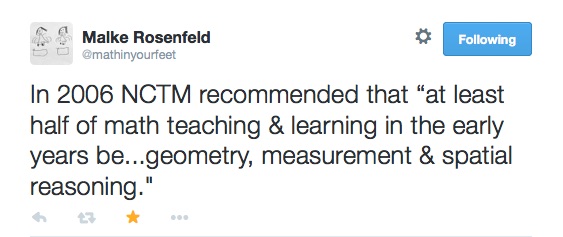 ahhh, it felt like validation in some weird way.
ahhh, it felt like validation in some weird way.
After this Twitter conversation, I started to dig back into my students work to find examples that makes these connections visible.
After doing a dot image as our Number Talk one day, I asked students to see if they saw any connections between the image and our volume work that day. This work shows how students see the commutative property in both, multiplication as groups (like layers in volume) and most importantly puts a visual to how multiplication and its properties “look” in both 2D and 3D.




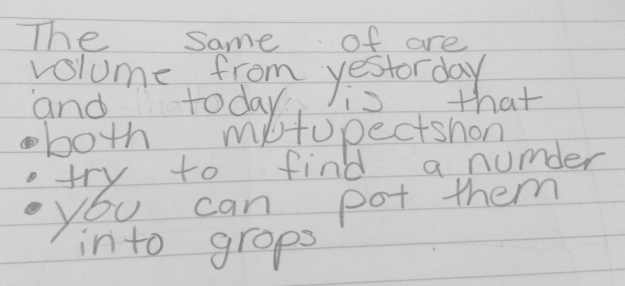 Then volume led into some great generalizations about how multiplication “works” through looking at patterns, which is extremely important in mathematics in and of itself. In keeping constant volume (product), students realized they could double one dimension (factor) and half the other. In doubling the volume (product), the students realized they double one dimension (factor) and leave the others the same. T
Then volume led into some great generalizations about how multiplication “works” through looking at patterns, which is extremely important in mathematics in and of itself. In keeping constant volume (product), students realized they could double one dimension (factor) and half the other. In doubling the volume (product), the students realized they double one dimension (factor) and leave the others the same. T

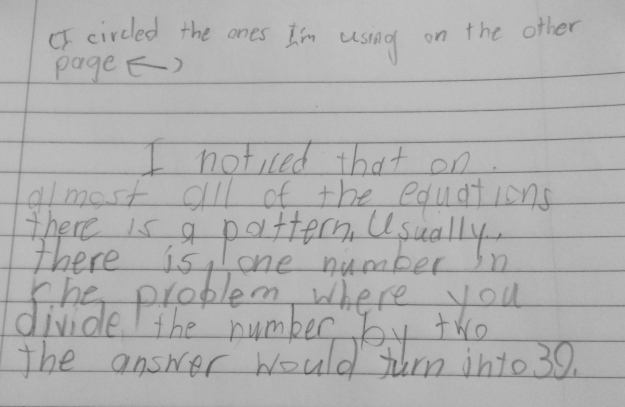 This volume discoveries later let to this claim on our claim wall:
This volume discoveries later let to this claim on our claim wall:
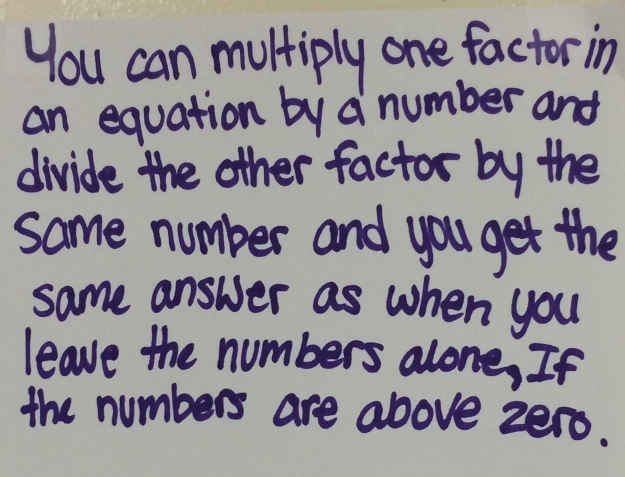 The students extended this area and volume work to fractions/decimals that showed that fractions/decimals act as numbers in operations as well, supporting the structure of our number system.
The students extended this area and volume work to fractions/decimals that showed that fractions/decimals act as numbers in operations as well, supporting the structure of our number system.
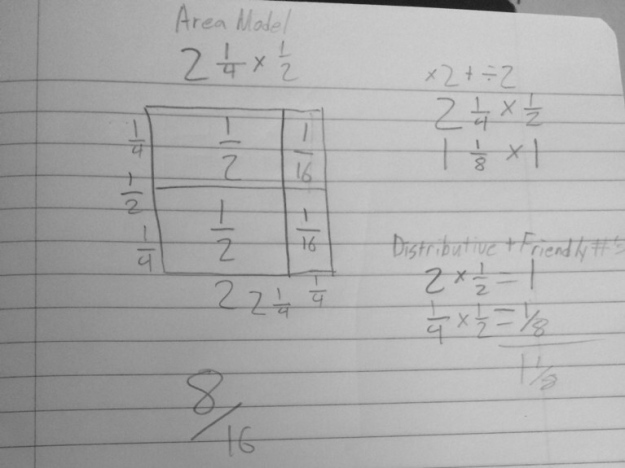
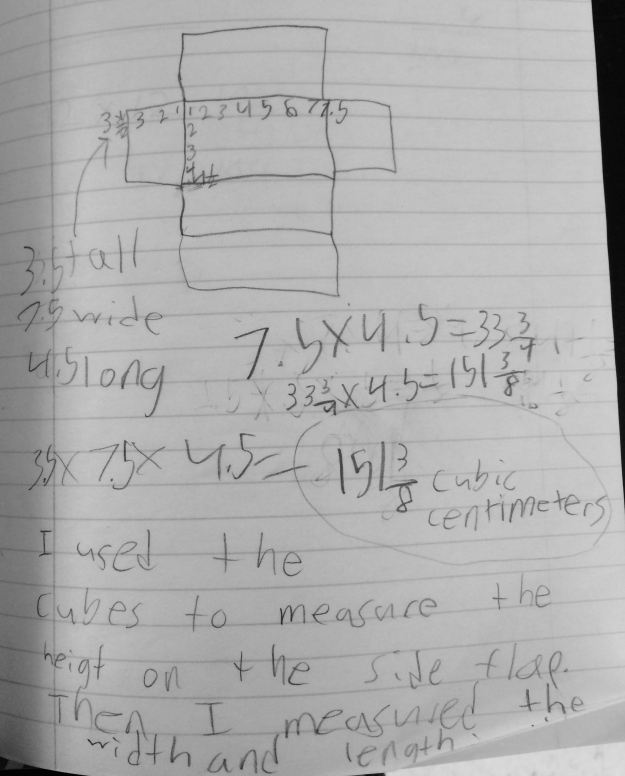 While we classified polygons, I saw my students develop proofs for angle measures and our always, sometimes, never experience was invaluable. This work in connecting reasonings through visuals of the polygons explicitly supports the Mathematical Practices of using models, perseverance, and repeated reasoning.
While we classified polygons, I saw my students develop proofs for angle measures and our always, sometimes, never experience was invaluable. This work in connecting reasonings through visuals of the polygons explicitly supports the Mathematical Practices of using models, perseverance, and repeated reasoning.
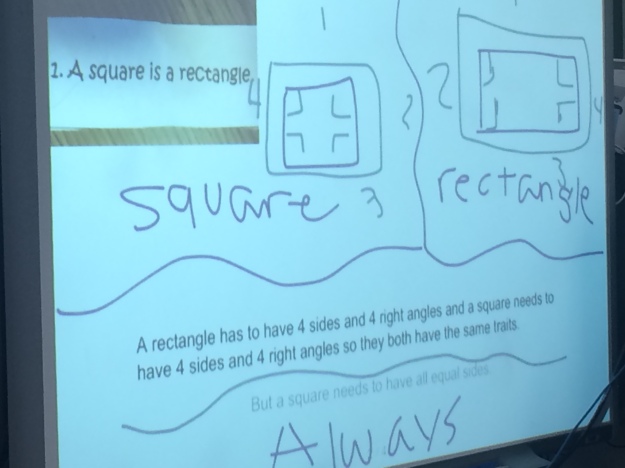
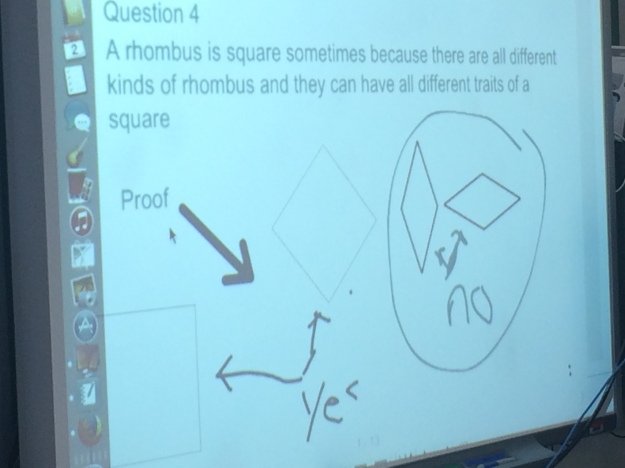
 Then our work with perimeter and area solidified the importance of students creating a visual in building number is so important. In a problem with equal perimeter and different area (moving into greatest area), students created a beautiful visual for the commutative property as well as supported students in seeing the closer two numbers (with the same sum), the greater the product.
Then our work with perimeter and area solidified the importance of students creating a visual in building number is so important. In a problem with equal perimeter and different area (moving into greatest area), students created a beautiful visual for the commutative property as well as supported students in seeing the closer two numbers (with the same sum), the greater the product.
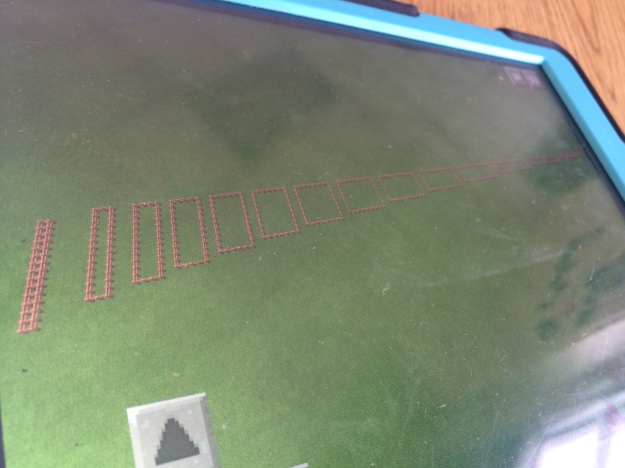

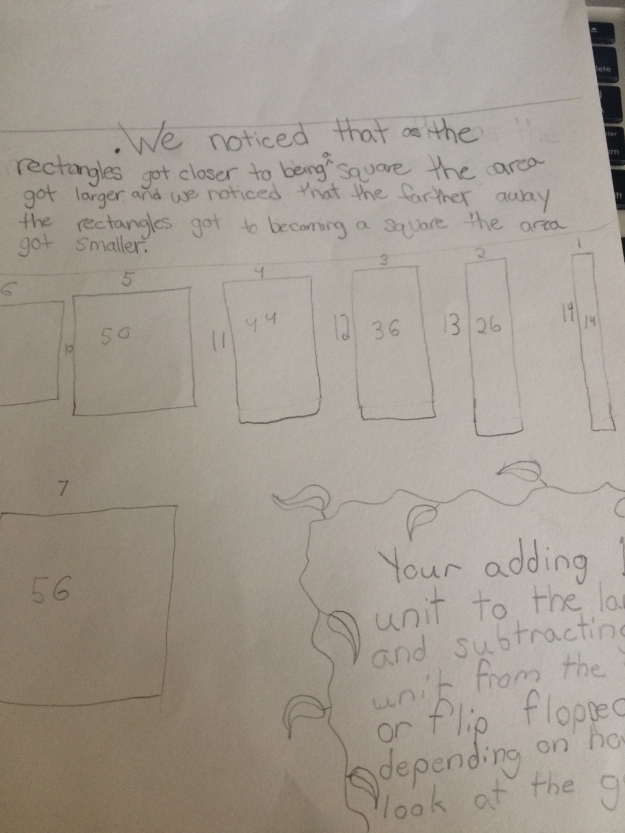
I wonder if there is another reason to emphasize geometry: it instills the habit of drawing pictures and being comfortable with diagrams. I have been finding students very reluctant to use strategies that involve drawing something when they know that there is a pure calculation approach they could be using.
LikeLike
I could not agree more! I have seen the students, more and more, using drawings in developing proofs of a generalization. Thanks so much!
LikeLike
Pingback: Conjecture or Claim? | Math Minds
Pingback: Supporting Mathematical Habits of Mind | MathMinds